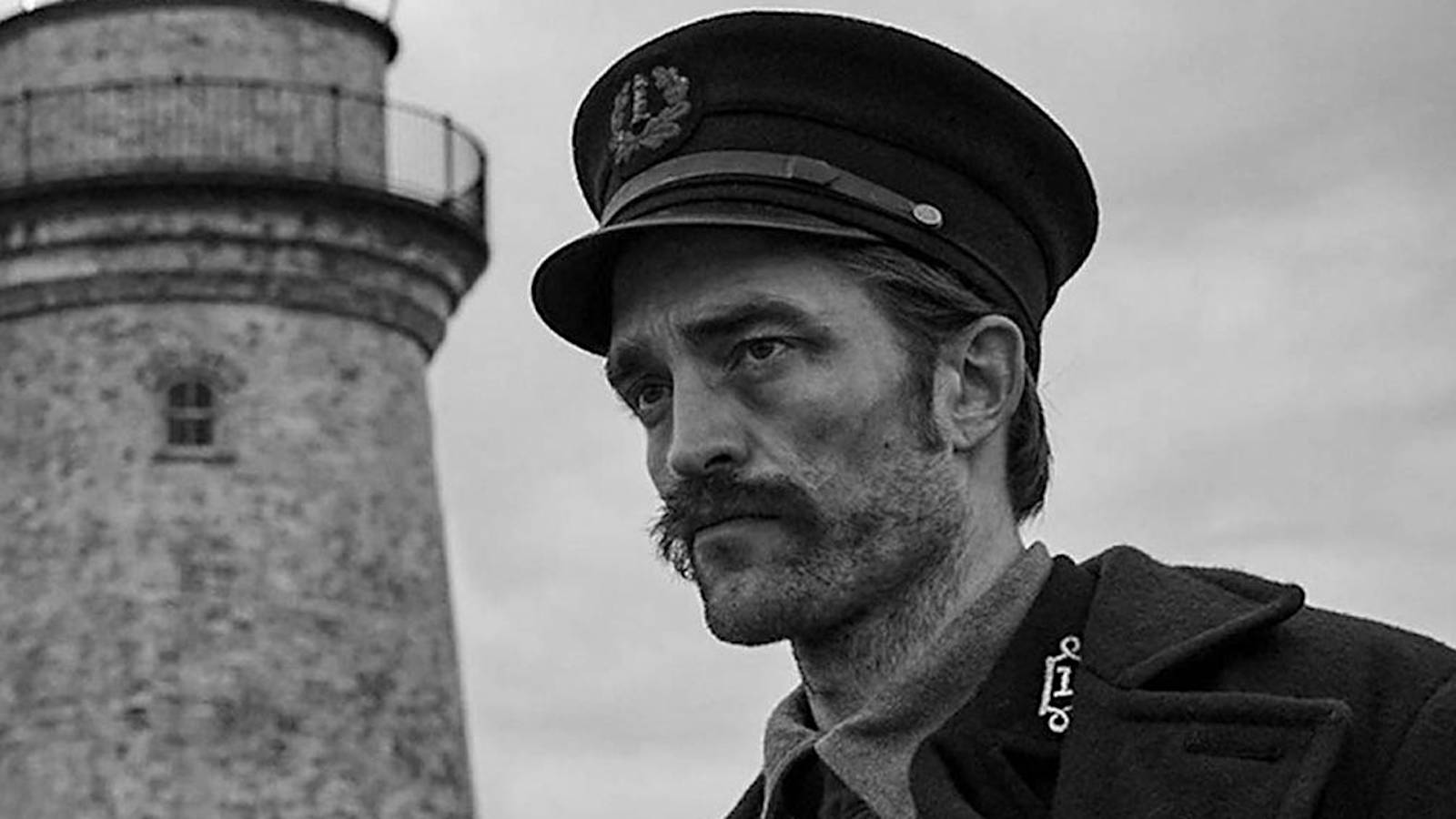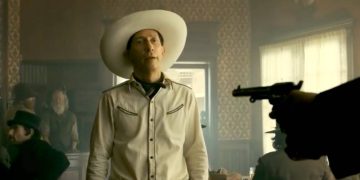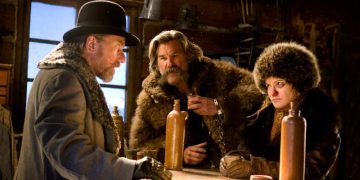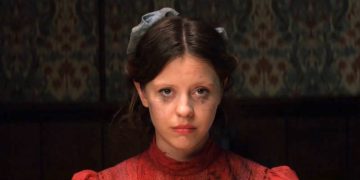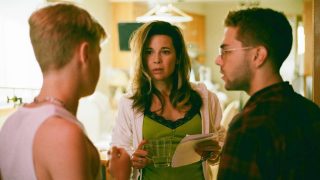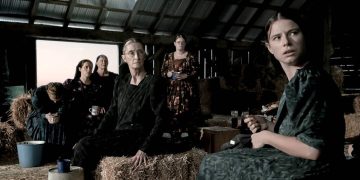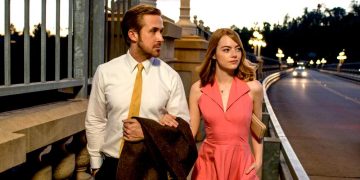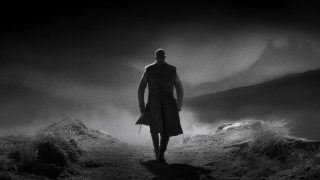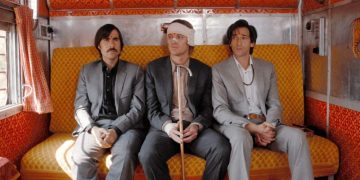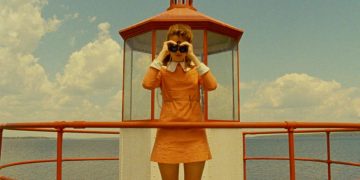Black-and-white isn't just for old movies from decades ago. It can be an aesthetic choice that serves all kinds of purposes: mirroring historical settings, conveying flashbacks, or even just to look cool (like in Yorgos Lanthimos's recent comedy Poor Things).
Indeed, there are lots of modern movies released in or after 2000 that incorporate monochrome visuals in various ways, and some have proven to be stunning examples of how the black-and-white look can enrich stories in ways that go beyond just cosmetic.
Here are my picks for the best modern black-and-white movies that were released in the 21st century and what makes them great!
15. Sin City (2005)
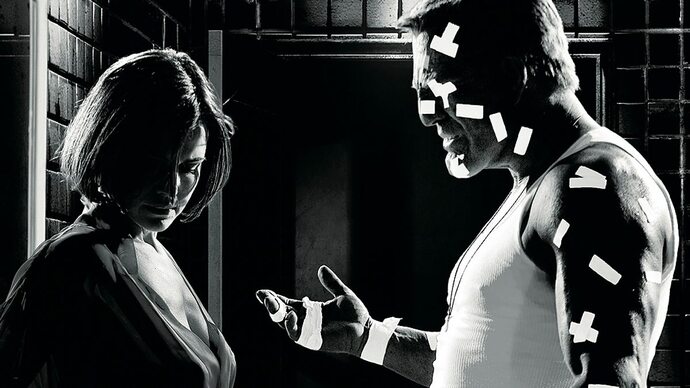
Directed by Frank Miller and Robert Rodriguez
Starring Mickey Rourke, Clive Owen, Bruce Willis
Crime, Thriller (2h 4m)
Sin City isn't just black-and-white, but also filmed like a comic book. The original comics were published by Frank Miller in the 1990s, who co-directed the movie adaptation alongside Robert Rodriguez.
Sin City combines several narrative strands and recurring characters from across the comic book series into one feature-long feast for the eyes. The grayscale palette mimics the look of the original black-and-white pages, which in turn mimics the shadowy film noir visuals of the 1940s.
The star-studded ensemble cast is too long to list here, but they elevate this neo-noir crime thriller in which street gangs, serial killers, and private detectives litter the urban underworld of Basin City.
14. The Party (2017)
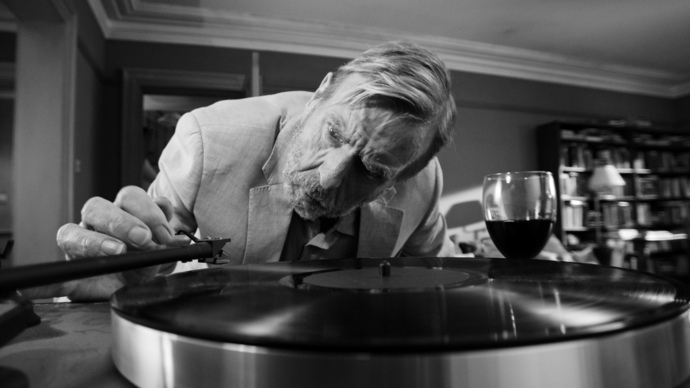
Directed by Sally Potter
Starring Timothy Spall, Kristin Scott Thomas, Patricia Clarkson
Comedy, Drama (1h 11m)
A huge and incredible cast stars in Sally Potter's black comedy The Party, which is shot completely in black-and-white!
Everything is oh-so-sophisticated for ascending politician Janet's (played by Kristin Scott Thomas) celebration. There's champagne, canapés, and intellectual conversation—but beneath the surface, you'll also find love affairs, hard drugs, and a gun.
A series of worsening announcements cause the evening to unravel, and Janet's colorful future drains away... just like the film's color scheme.
13. Mank (2020)
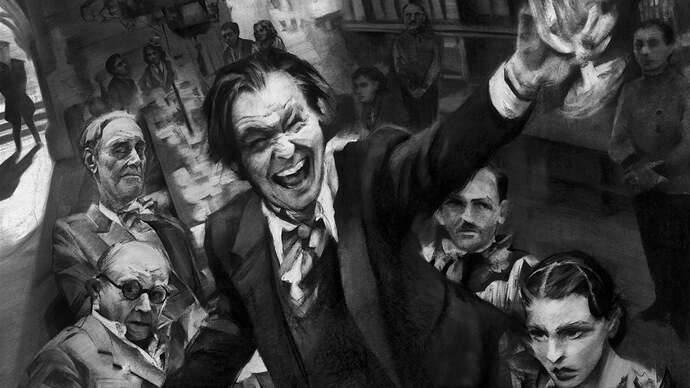
Directed by David Fincher
Starring Gary Oldman, Amanda Seyfried, Lily Collins
Biography, Comedy, Drama (2h 11m)
You've probably heard of the classic movie Citizen Kane, directed by Orson Welles. But what about the man who wrote it? If you thought Welles himself wrote it, you're in for a surprise!
Welles wasn't the only one on scene, and conflict arose when it came time to credit the film's creator. As it turns out, Herman J. Mankiewicz was the true genius behind Citizen Kane's script, who turned out this masterpiece despite being a foggy-minded alcoholic.
In Mank, Gary Oldman plays the bleary Hollywood writer under the direction of David Fincher. To reflect the time period—and Citizen Kane itself—Mank plays out with the desaturation of 1930s cinema.
12. The Saddest Music in the World (2003)
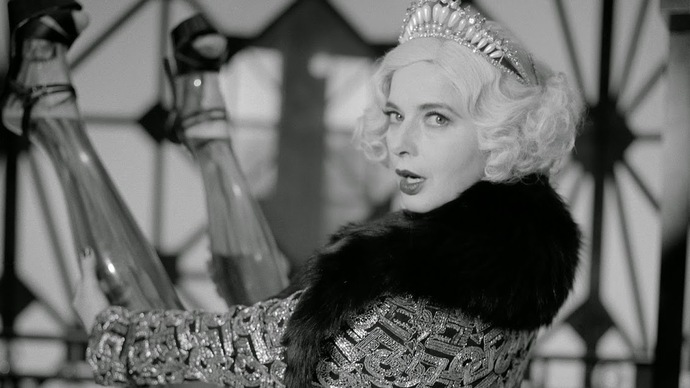
Directed by Guy Maddin
Starring Isabella Rossellini, Mark McKinney, Maria de Medeiros
Comedy, Musical (1h 40m)
A musical with an experimental twist, The Saddest Music in the World is an imaginative take on old-school filmmaking.
Isabella Rossellini plays a baroness who announces a competition to find—you guessed it—the saddest music in the world. But the contest is a publicity stunt to promote her company during the Great Depression. "If you're sad and like beer, I'm your lady" is one way to reel in an audience!
To imitate the 1920s and 1930s, Guy Maddin shot the whole movie in black-and-white (as he does with many of his films). Bizarre and nostalgic, this one won't be to every viewer's taste.
11. Malcolm & Marie (2021)
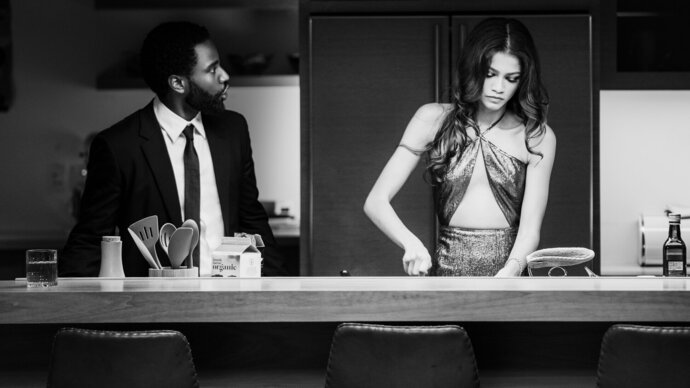
Directed by Sam Levinson
Starring John David Washington, Zendaya
Drama, Romance (1h 46m)
Malcolm & Marie received mixed reviews upon release in early 2021. On the one hand, the performances by Zendaya and John David Washington are simply impeccable. Sam Levinson's direction is clean and the grayscale cinematography is beautiful.
However, the scenes find themselves playing on something of a loop, and Sam Levinson was accused of being overly self-indulgent. It's practically an autobiography, but without the white privilege.
That said, the look of this movie is a wonder to behold. Over the course of one night—the night of Malcolm's successful film premiere—this young couple swings between loving and hating each other. Intense and emotive, Malcolm & Marie is worth the watch.
10. Maestro (2023)
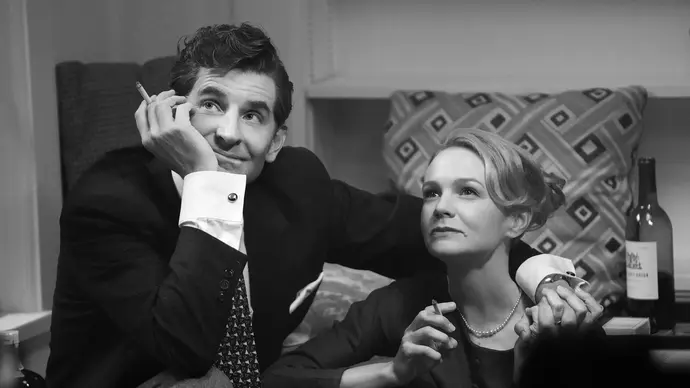
Directed by Bradley Cooper
Starring Carey Mulligan, Bradley Cooper, Matt Bomer
Biography, Drama, History (2h 9m)
Maestro was recently released on Netflix after a limited theatrical run. (Too limited for a film as pretty as this, I'd say.) Although it's not entirely shot in black-and-white, the main part of Maestro is, and advertisers really capitalized on it when marketing the film.
Bradley Cooper isn't the first filmmaker to use black-and-white and a shrunken aspect ratio to signal the past, but it's a technique that never gets old. (Unlike Cooper's Leonard Bernstein, who bookends the narrative as a famous composer in his 70s.)
Leonard Bernstein was a near-EGOT-winning virtuoso and the first prominent American conductor. Cooper directs and stars as Bernstein in this passionate biographical ode, recounting his life around the focal point of Bernstein's wife (played by Carey Mulligan).
9. Cold War (2018)
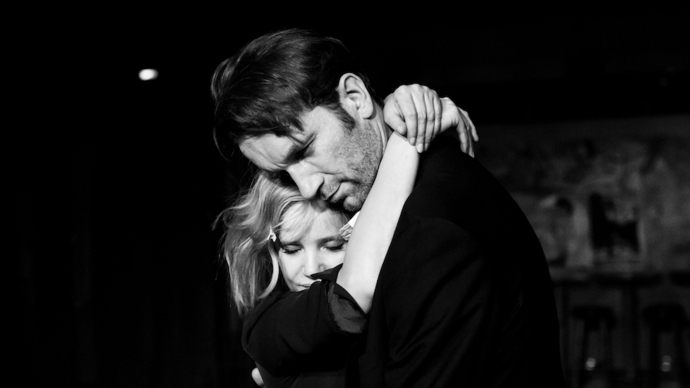
Directed by Paweł Pawlikowski
Starring Joanna Kulig, Tomasz Kot, Borys Szyc
Drama, Music, Romance (1h 29m)
Sometimes, black-and-white is just used to make a film look nice. Other times, it's a mirror to a story's themes and emotions. In Cold War, it's both, with the chilliness of a colorless world reflecting the Cold War era.
Paweł Pawlikowski offers us a stripped-back love story that doesn't always feel warm, dewy, and loving, hence all the gray. The aesthetic choice also goes hand-in-hand with the sad jazz soundtrack, where melancholia and grief meet beauty and art.
Joanna Kulig and Tomasz Kot star as the central lovers in Cold War, who meet within the music scene of a post-war Poland and embark on a volatile—almost fatal—romance together.
8. Belfast (2021)
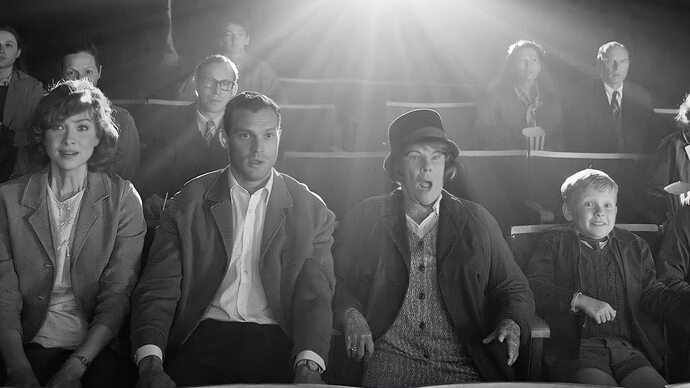
Directed by Kenneth Branagh
Starring Caitríona Balfe, Judi Dench, Jamie Dornan
Biography, Drama, Romance (1h 38m)
The Troubles were a poverty-stricken, 30-year conflict that teetered on the edge of civil war, dividing Northern Ireland between unionist Protestants and nationalist Catholics. Therefore, it seems only fitting that a film about it should be colored accordingly.
Most people probably assume Kenneth Branagh was born in a stately English home, studying Shakespeare with his upper-class parents. But he was actually born into a working-class family in Belfast, not long before The Troubles erupted.
Belfast is an homage to Branagh's homestead, who directs Caitríona Balfe, Judi Dench, and Jamie Dornan in this stark portrait of a divided community.
7. The Artist (2011)
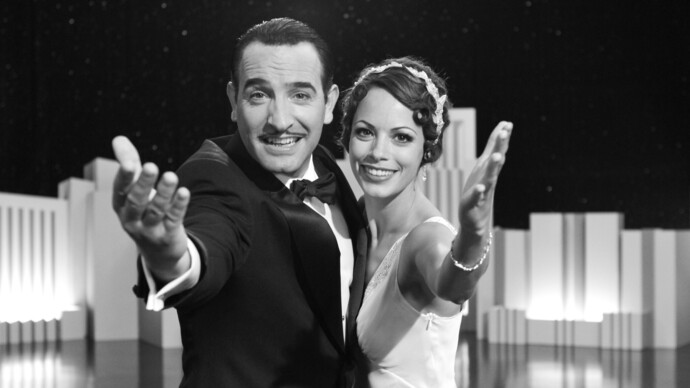
Directed by Michel Hazanavicius
Starring Jean Dujardin, Bérénice Bejo, John Goodman
Comedy, Drama, Romance (1h 40m)
It makes sense that a film about silent cinema would be filmed to look like silent cinema. But Michel Hazanavicius took it one step further and made The Artist sound like silent cinema, too, by taking away all of its dialogue.
Here, 1920s film star George Valentin (played by Jean Dujardin) has his career threatened by the birth of "talkies" (i.e., movies with sound and spoken dialogue) at the same time he falls in love with the young Peppy Miller (played by Bérénice Bejo).
This French comedy-drama may be clichéd at times, but what silent-era romance wasn't? Hazanavicius pays tribute to early Hollywood through his dynamic and creative filmmaking, boldly omitting any words or color for a truly authentic feel.
6. The Tragedy of Macbeth (2021)
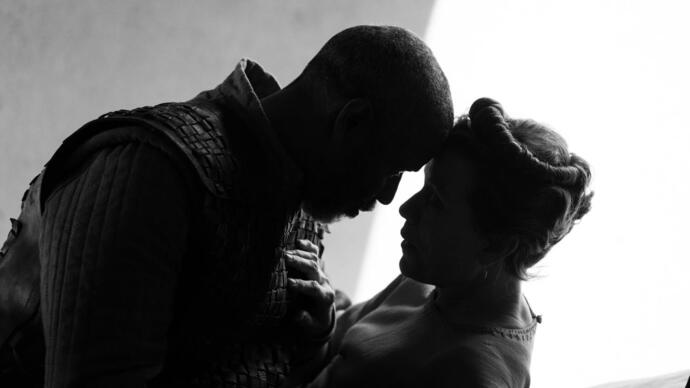
Directed by Joel Coen
Starring Denzel Washington, Frances McDormand, Alex Hassell
Drama, Mystery, Thriller (1h 45m)
There are over 500 films that credit Shakespeare as their writing source, and more than half of them are based on the same four titles: Romeo and Juliet, Hamlet, Othello, and Macbeth.
Many Macbeth movies are black-and-white because they were older and produced before color film, but The Tragedy of Macbeth is monochrome entirely out of choice.
Crisp, modern high-definition meets old-school German Expressionism in Joel Coen's rendition of the tragic play, and its visual prowess helps it to stand out in an overcrowded genre.
From the prestige look and feel of The Tragedy of Macbeth, it's no surprise that it's an A24 production, starring Denzel Washington and Frances McDormand, among several other stars.
5. Nebraska (2013)
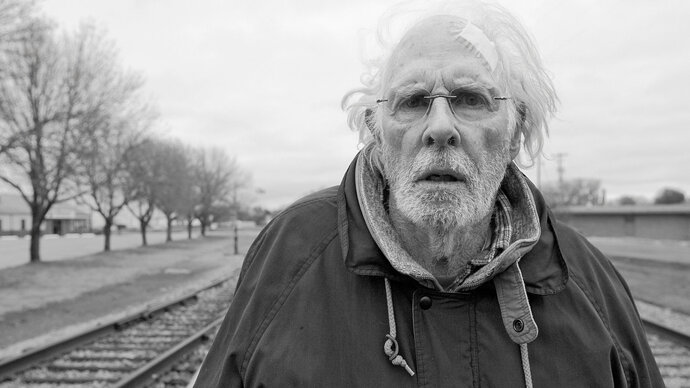
Directed by Alexander Payne
Starring Bruce Dern, Will Forte, June Squibb
Drama (1h 55m)
In Nebraska, Bruce Dern plays the dishevelled and beer-pumped Woody Grant, who believes he's won a million-dollar sweepstake prize. His son David (played by Will Forte) realizes it's a scam, but still ends up driving his father 750 miles to Lincoln, Nebraska.
Alexander Payne directs this straight-talking comedy-drama, using a black-and-white aesthetic to emphasize the "poetic power" of the landscapes that play such a pivotal role in the story.
Payne went against the distributors' wishes for Nebraska, who wanted to accommodate a more mainstream audience with color. I'm glad he stuck to his guns and kept his choice!
4. Control (2007)
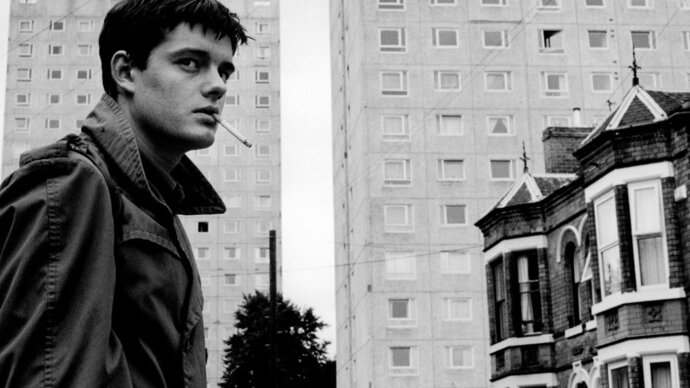
Directed by Anton Corbijn
Starring Sam Riley, Samantha Morton, Craig Parkinson
Biography, Drama, Music (2h 2m)
Beyond simply being used to achieve a vintage look, the black-and-white aesthetic is a great tool for gloomy artistic expression—and that fits perfectly with the life of Joy Division singer Ian Curtis (played by Sam Riley), whose life is explored in Control.
The Manchester-born musician suffered with epilepsy and depression, then sadly committed suicide at the tender age of 23. Anton Corbijn absorbs us into Curtis's painful world, torn between his heart and conscience, exhausted by the demands of his work.
Sam Riley gives an astounding performance as the late singer, and Corbijn opts for a true sense of realism over the frills and clichés of most celebrity biopics.
3. Bait (2019)
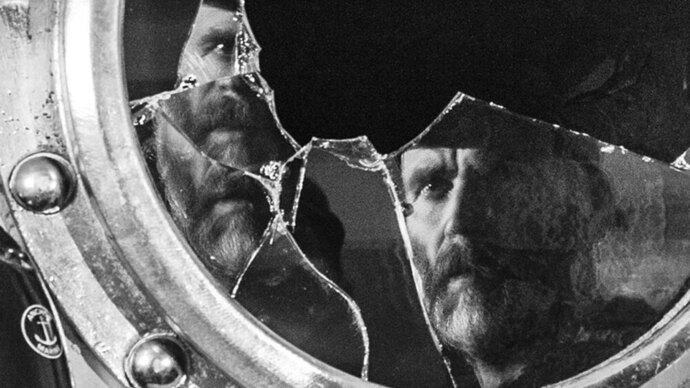
Directed by Mark Jenkin
Starring Edward Rowe, Giles King, Chloe Endean
Drama (1h 29m)
Wow, I don't think anyone saw this film coming. It's rare for experimental cinema to make waves through mainstream audiences, but Mark Jenkin proved it's not entirely impossible.
Bait is a grainy black-and-white 16mm film, shot on a vintage hand-cranked Bolex camera. It takes place in a Cornwall fishing village where Martin Ward (played by Edward Rowe) struggles to make ends meet.
Issues of tourism, gentrification, and poverty are navigated in a textured cinematic experience that's like no other. Bait received glowing critical reviews, hailed for its unique and immersive achievements that usually remain in the confines of indie circles.
2. The Lighthouse (2019)
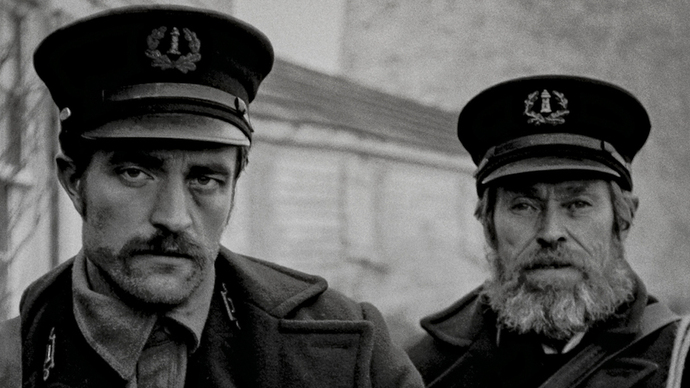
Directed by Robert Eggers
Starring Robert Pattinson, Willem Dafoe, Valeriia Karaman
Drama, Fantasy, Mystery (1h 49m)
In The Lighthouse, Robert Pattinson plays a young rookie seeking peace while Willem Dafoe plays a gnarly veteran with a ye-olde-sailor's accent. Both are stuck together in the late 19th century as lighthouse keepers of a lonely New England island, struggling to keep hold of their sanity.
Sea monsters and surreal imagery set The Lighthouse apart from the other movies on this list, taking us along on their journey as they gradually decline into madness. Besides its eerie plot, Robert Eggers's masterpiece is a lesson in visual splendor that has us gasping in awe and horror.
1. Roma (2018)
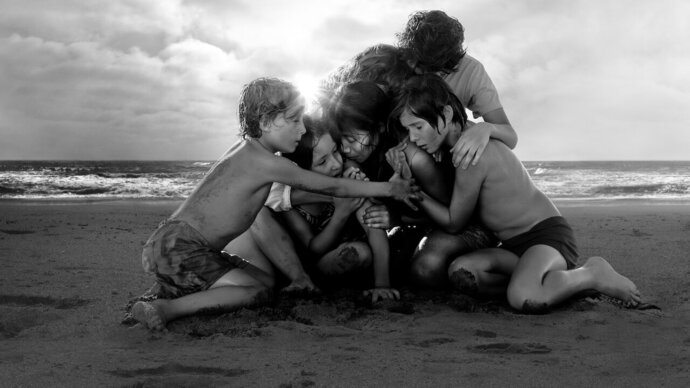
Directed by Alfonso Cuarón
Starring Yalitza Aparicio, Marina de Tavira, Diego Cortina Autrey
Drama (2h 15m)
Roma won the Academy Award for Best Cinematography in 2019, and I can certainly see why. No one can argue with first place going to director Alfonso Cuarón's Spanish drama, set in the early 1970s.
Cleo (played by Yalitza Aparicio) is an indigenous live-in maid for a middle-class white family in Mexico City. As always, Cuarón's tear-jerking spectacle has many important political undertones as it explores themes of motherhood, social class, and inequality.
Aparicio's acting debut was a glittering success and Roma was praised for its dynamic storytelling. Cuarón opted for the monochromatic look as a way of using the present to look into the past and remembering what must not be forgotten.
